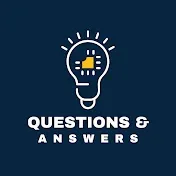Unlocking the Power of Image to Text Conversion: A Complete Guide
In today’s world, technology has evolved to a point where tasks that were once time-consuming and tedious can now be automated, thanks to optical character recognition (OCR) and image to text conversion. This powerful tool allows users to extract text from images, opening up a world of possibilities for businesses and individuals alike. In this complete guide, we will explore the benefits, applications, and best practices of image to text conversion, as well as address some frequently asked questions.
Benefits of Image to Text Conversion:
1. Enhanced Accessibility: One of the most significant advantages of using image to text conversion is the improved accessibility it offers. By converting images to text, not only can visually impaired individuals access the content, but it also allows search engines to index the text, making it searchable and discoverable for a wider audience.
2. Time and Cost Savings: Manually typing text from images can be a time-consuming and error-prone task. Image to text conversion automates this process, saving valuable time for individuals or businesses. Additionally, it eliminates the need for hiring external resources for manual data entry, resulting in cost savings.
3. Improved Searchability: By converting scanned documents, handwritten notes, or even product labels into searchable text, image to text conversion enables users to find specific information quickly. This can be particularly useful in research, legal, or archival settings, where large volumes of data need to be processed and accessed efficiently.
4. Data Extraction and Analysis: Image to text conversion opens up opportunities for extracting valuable information from visual data. By translating text from images into editable formats, data extraction becomes more accessible, enabling businesses to leverage this information for analytics, reporting, and decision-making processes.
Applications of Image to Text Conversion:
1. Document Digitization: Organizations often have heaps of paperwork that need to be converted into digital formats for easy storage, retrieval, and sharing. Image to text conversion simplifies this process by transforming scanned documents or photographs into searchable and editable text.
2. Language Translation: With the ability to extract text from images, language translation becomes a seamless process. Users can capture the text in an image and convert it into their desired language, facilitating communication across different cultures and languages.
3. Digitizing Handwritten Notes: Converting handwritten notes into digital text can be incredibly convenient. Image to text conversion allows users to capture handwritten information and convert it into editable text that can then be organized, edited, or shared digitally.
Best Practices for Image to Text Conversion:
1. Use High-Quality Images: For accurate and reliable results, ensure that the images you are converting to text are of high quality. Avoid blurry, low-resolution, or distorted images, as they may affect the accuracy of the conversion process.
2. Consider Language and Font Compatibility: Different languages and fonts have unique character sets. It is essential to choose an OCR system that supports the language and font you are working with to ensure optimal accuracy and precision in the conversion process.
3. Edit and Proofread: While image to text conversion tools are incredibly advanced, there may still be instances where errors occur. After conversion, it is vital to proofread and edit the extracted text to eliminate any inaccuracies or formatting issues.
FAQs:
Q1: How does image to text conversion impact SEO?
A1: Image to text conversion has a positive impact on SEO as it allows search engines to access and index the text contained within images. This enables better visibility and searchability of the content, thereby increasing organic traffic to the website.
Q2: How can I optimize images for better conversion accuracy?
A2: To optimize images for better conversion accuracy, ensure they are of high quality, use appropriate lighting conditions, and capture the image from the correct angle. Additionally, using clean and legible fonts in the images can enhance accuracy.
Q3: Is image to text conversion secure and private?
A3: Image to text conversion tools employ encryption and other security measures to ensure data privacy and confidentiality. However, it is always recommended to use reputable and trusted OCR services to protect sensitive information.
Unlocking the power of image to text conversion has revolutionized how we process, analyze, and share information. From document digitization and data extraction to language translation and accessibility enhancement, image to text conversion offers countless benefits across various industries. By following the best practices outlined above and utilizing reliable OCR tools, individuals and businesses can harness the potential of image to text conversion and unlock a world of possibilities.










